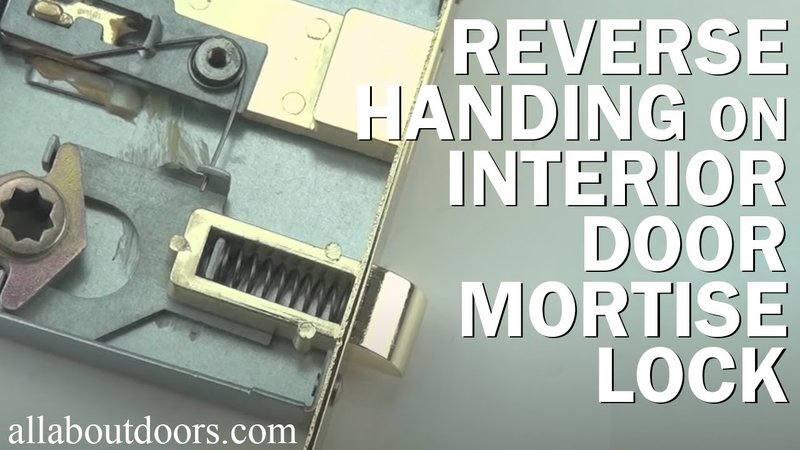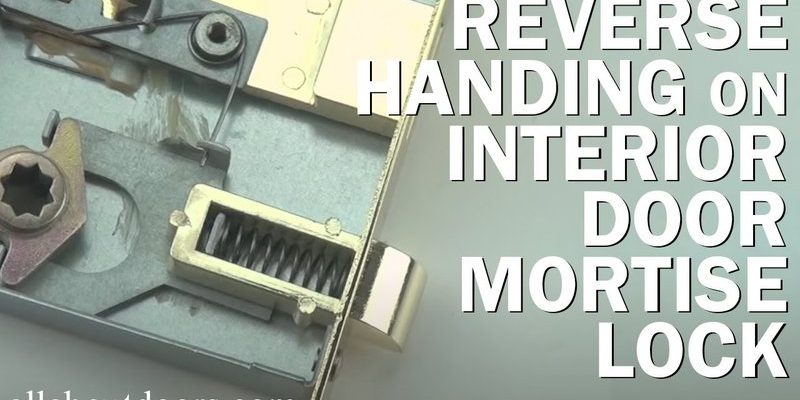
Frost and moisture can creep into your door locks, especially in cold climates. This is often due to condensation or humidity freezing inside the lock mechanism. Typically, this happens with older or lower-quality locks. If you’re using a standard keyed interior door lock, like those from Schlage or Kwikset, understanding how to resolve this issue can make your life a lot easier. So, let’s dive into some practical solutions to unfreeze that lock!
Recognizing the Signs of a Frozen Lock
Before jumping into solutions, it’s important to recognize the signs that your lock might be frozen. You might be turning the key, and it just won’t budge. Or maybe you hear a kind of grinding noise, which is a dead giveaway that something’s not right.
Here’s what to look for:
- Resistance when turning the key: If the key feels stiff or won’t turn at all, your lock might be frozen.
- Grinding or sticking: If the key sounds like it’s grinding against something, there might be ice buildup inside.
- Visible frost: If you see frost or ice around the lock or doorframe, it’s a clear sign that it’s time to act.
Understanding these signs is crucial because addressing them early can prevent further damage to your lock mechanism. When left untreated, a frozen lock can lead to a complete breakdown of the internal components.
Common Causes of a Frozen Door Lock
You might be wondering what causes a door lock to freeze in the first place. It often boils down to environmental factors. Here are the primary culprits:
- Cold temperatures: Obviously, cold weather can freeze any moisture within the lock.
- Humidity: High humidity can condense inside the lock, especially when it’s cold outside.
- Old lubricant: Locks need lubricant to function smoothly. If it’s dried up or has absorbed moisture, it can lead to freezing.
Recognizing these causes can help you address the root issue rather than just the symptoms. If it’s a humidity problem, you might want to look at improving the indoor climate in your home.
Step-by-Step: Thawing a Frozen Lock
If your lock is frozen, don’t panic! Here’s a simple step-by-step process to help you thaw it out:
Step 1: Warm your key
Using your body heat, warm the key by rubbing it between your hands or placing it briefly in your pocket. This can help transfer some heat into the lock mechanism.
Step 2: Apply heat to the lock
If the key warming doesn’t do the trick, you can use a hairdryer on a low setting. Keep it a safe distance (about 6 inches) from the lock to avoid damaging the door finish.
Step 3: Use a de-icer
If heat isn’t working, a commercial de-icer or even rubbing alcohol can be sprayed into the lock. Just make sure to wipe away any excess afterward.
These steps should help you regain access to that pesky room. Just remember to keep an eye on the weather and the humidity levels in your home to prevent future freeze-ups.
Preventing Future Lock Freezes
Once you’ve managed to unfreeze your lock, you’ll want to take some proactive measures to prevent future issues. Here’s what you can do:
- Regular maintenance: Periodically lubricate your lock with a graphite-based lubricant. This prevents moisture build-up.
- Keep the area dry: Wipe down the lock and surrounding area when it snows or if there’s rain. Keeping the lock dry can make a big difference.
- Weather stripping: Installing weather stripping around your door can help keep cold air and moisture out, which can prevent freezing.
These simple steps can go a long way in protecting your lock from the harsh winter elements. You’ll save time and frustration—and possibly some money on repairs—by catching these issues early.
When to Call a Professional
While many times you can troubleshoot a frozen lock on your own, there are moments when it makes sense to call in a pro. Here’s when you might consider picking up the phone:
- Damage to the lock: If you suspect that the internal mechanism is broken or damaged, it’s best to consult a locksmith.
- Frequent freezing: If your lock keeps freezing despite your best efforts, it might be time to upgrade to a more reliable model.
- Feeling overwhelmed: If the thought of troubleshooting a lock makes you anxious, a professional can handle it quickly and efficiently.
It’s better to invest in a professional solution than to risk further damage to your lock or door.
Final Thoughts
Dealing with a frozen keyed interior door lock can be a real hassle, especially in cold climates. The good news is that with a bit of knowledge and some proactive steps, you can troubleshoot and resolve this issue with ease. Remember to maintain your locks regularly, and don’t hesitate to reach out for professional help if needed. Keeping your home secure and accessible is essential, and staying on top of these small issues can save you a lot of headaches down the road. So, grab that warm key and get back to enjoying your cozy space!
